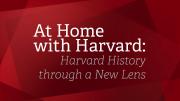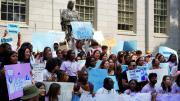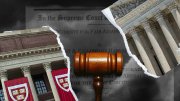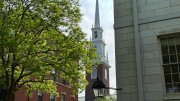This round-up is part of Harvard Magazine’s series “At Home with Harvard,” a guide to what to read, watch, listen to, and do while social distancing. Read the prior pieces, featuring stories about the history of women at Harvard, the climate crisis, Harvard in TV and in the movies, and more, here.
Accepted histories can always be reexamined in a new light, and this is just as true of Harvard’s history. In sometimes surprising ways, the University’s past tracks the history of the United States and the world. Here, we’ve compiled a guide to some of Harvard Magazine’s most notable stories about episodes in Harvard’s history, some of them only recently fully unearthed, including the University’s connections to slavery and its role in the rise of eugenics.
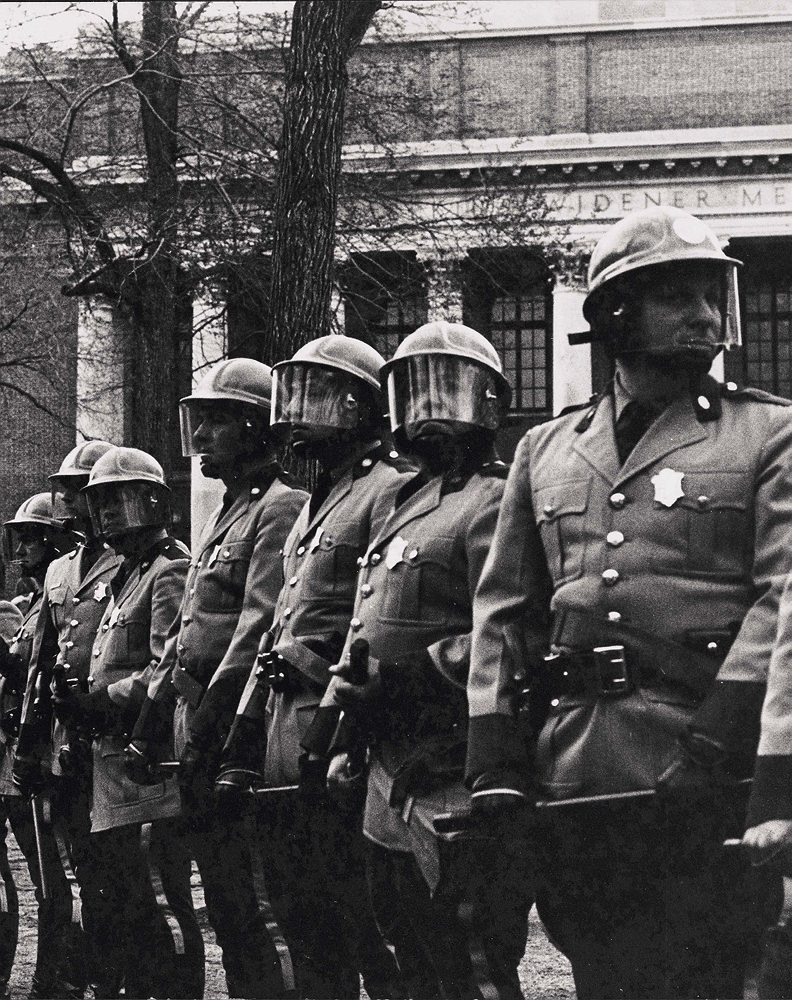
State police gather in front of Widener Library near sunrise on April 10
Photograph courtesy of Harvard University Archives. HUA 969.71 Image 3
Fifty years after a student takeover of University Hall, forcibly busted by police, that underscored the divisions within the larger society—in the process, nearly tearing the University apart—the magazine republished its contemporary coverage, and asked former deputy editor Craig Lambert (himself a member of the class of 1969) to gather current perceptions of the tumult and trauma that continue to loom large in memory and in political discourse. Wrote Frank Rich ’71, in the resulting feature “Echoes of 1969”: “We thought Harvard might end. We thought the world might end. None of this happened, but for a while we had seen what it might be like if the earth violently cracked open and civilization as we knew it tumbled into the darkness below.”
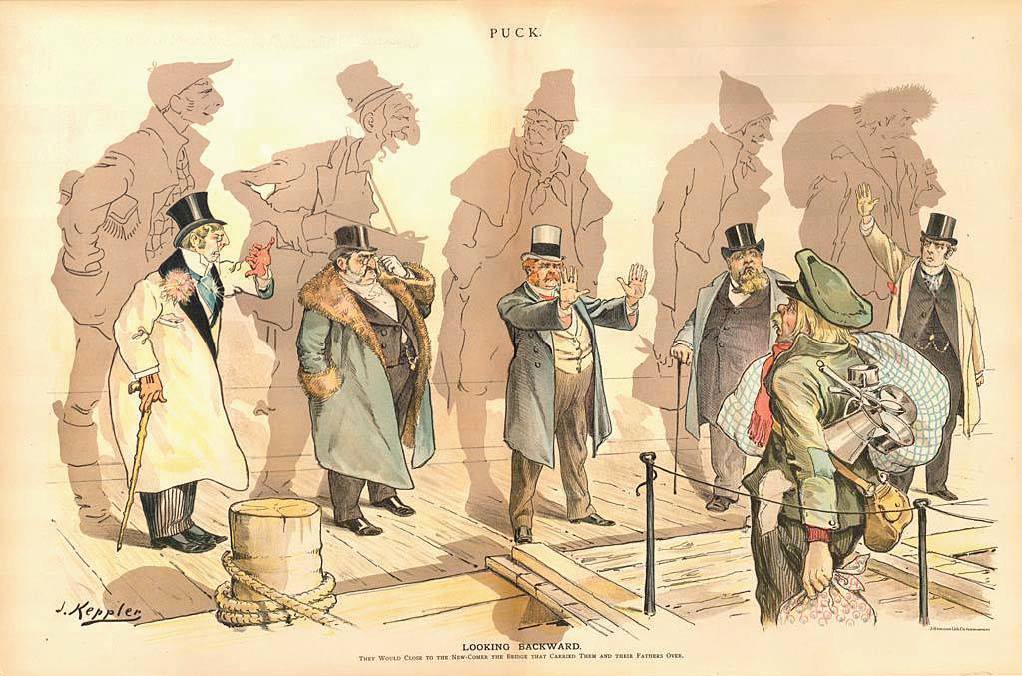
The views of Charles William Eliot and Oliver Wendell Holmes Sr. aided the descendants of immigrants in keeping out new immigrants, as depicted in Joseph Keppler’s 1893 “Looking Backward,” from Puck.
Puck, January 11, 1893
When Adam Cohen ’84, J.D. ’87, wrote his book, Imbeciles: The Supreme Court, American Eugenics, and the Sterilization of Carrie Buck, Harvardians’ involvement in—and often leadership of—the eugenics movement may have been dimly known, or understood within certain scholarly circles. His reporting brought that role to the fore. In this article, “Harvard's Eugenics Era,” he sounds a cautionary note for contemporary readers: “In the next few years, the headlines will be full of stories about gene-editing technology, genetic ‘solutions’ for a variety of human afflictions and frailties, and even ‘designer babies.’ Given that Harvard affiliates, again, will play a large role in all of these, it is important to contemplate how wrong so many people tied to the University got it the first time—and to think hard about how, this time, to get it right.”
~John S. Rosenberg, Editor
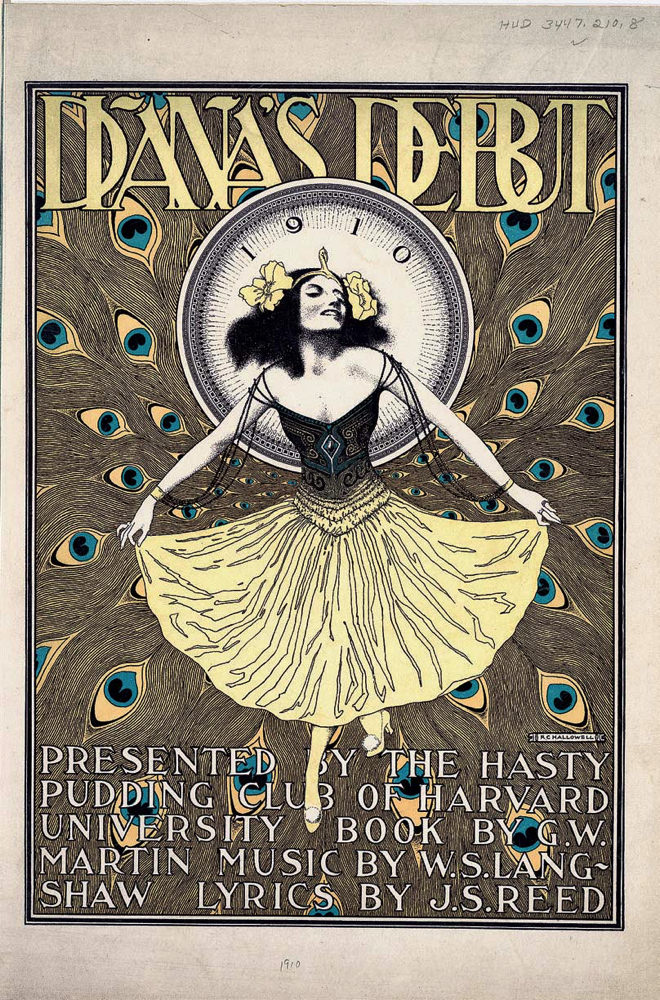
Hasty Pudding Theatricals art from 1910, advertising Diana’s Debut
Image courtesy of the Harvard Theatre Collection
The story of the Hasty Pudding’s evolution from a club that met secretly in student rooms into a full-blown theatrical company that writes and produces its own work each year is told in “Pudding Pots & Parody.” Future presidents, poets, and writers of prose alike have fledged their creative instincts as members of the Hasty Pudding. A collection of posters that the group has produced since the middle of the nineteenth-century parades the talents of its visual artists, and often includes obscure iconography associated with the club’s culture.
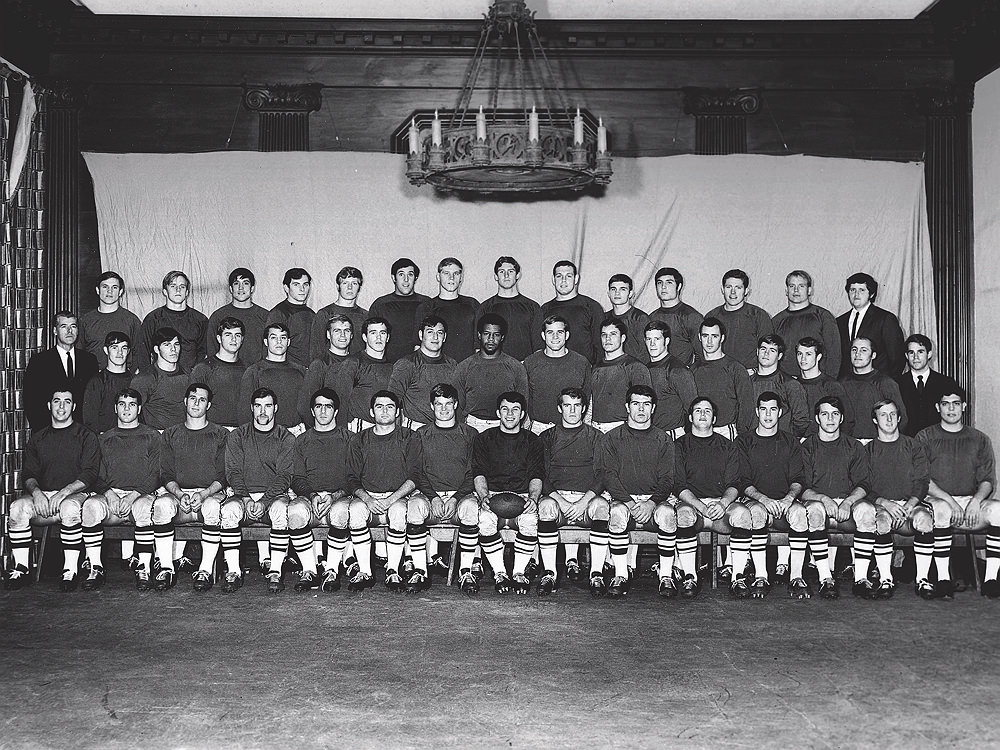
Happy campers: For their team photo, a day or two after The Game, the Crimson wore practice jerseys, giving them rather a raffish look.
Photograph courtesy of Harvard Athletic Communications
The most famous Harvard-Yale game ever played was in 1968, and the Crimson immortalized it with the headline “Harvard Beats Yale 29-29.” In “The Players,” George Howe Colt tells how the Harvard team became a melting pot where the sons of immigrants and the scions of the rich played on equal ground. This excerpt from chapter four of THE GAME: Harvard, Yale, and America in 1968, focuses first on Ralph “Ray” Hornblower III ’70 and then on other players, including the actor and director Tommy Lee Jones ’69. After you have read this piece, and bought Colt’s book, watch the 2008 documentary, Harvard Beats Yale 29-29.
~Jonathan Shaw, Managing Editor
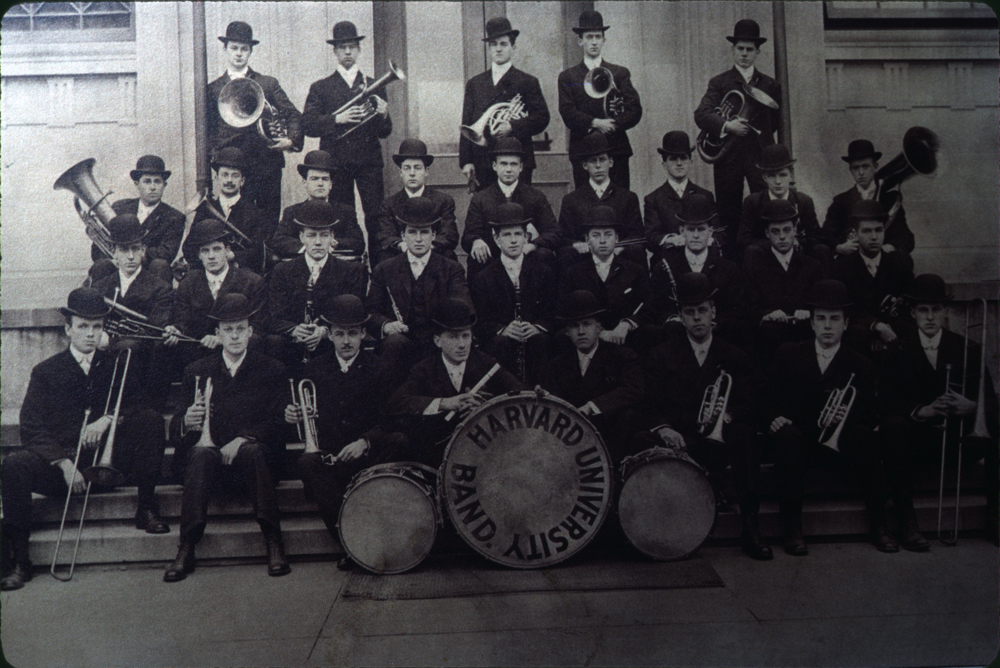
Sporting staid bowlers, early Harvard Band members pose for a formal portrait.
Courtesy of the Harvard University Band
Last year, the Harvard Band raucously turned 100 years old. Founded as a loose group playing football songs on the steps of Widener Library, it is now an extensive enterprise: a football band, a concert band, a wind ensemble, two jazz bands. And in this brief, vivid chronicle written by a former glockenspiel player, “A Hundred Years of Music,” there is both pleasure and pang for those who, like me, are sorely missing both live music and live sports these days. Sol Hurwitz ’53 writes of the band’s “dual personality”—hijinks and irreverence paired with prestige and musical excellence—its enduring camaraderie, and its slow, reluctant adaptation to the coed world (“The football band is not admitting women,” then band manager James D. Dill ’71 told The Harvard Crimson, because “our looseness and lewdness are just too sacred to us”). Hurwitz tells a great story here—and I especially love his descriptions of the band’s wild halftime shows and ongoing rivalry with the Yale band.
~Lydialyle Gibson, Associate Editor
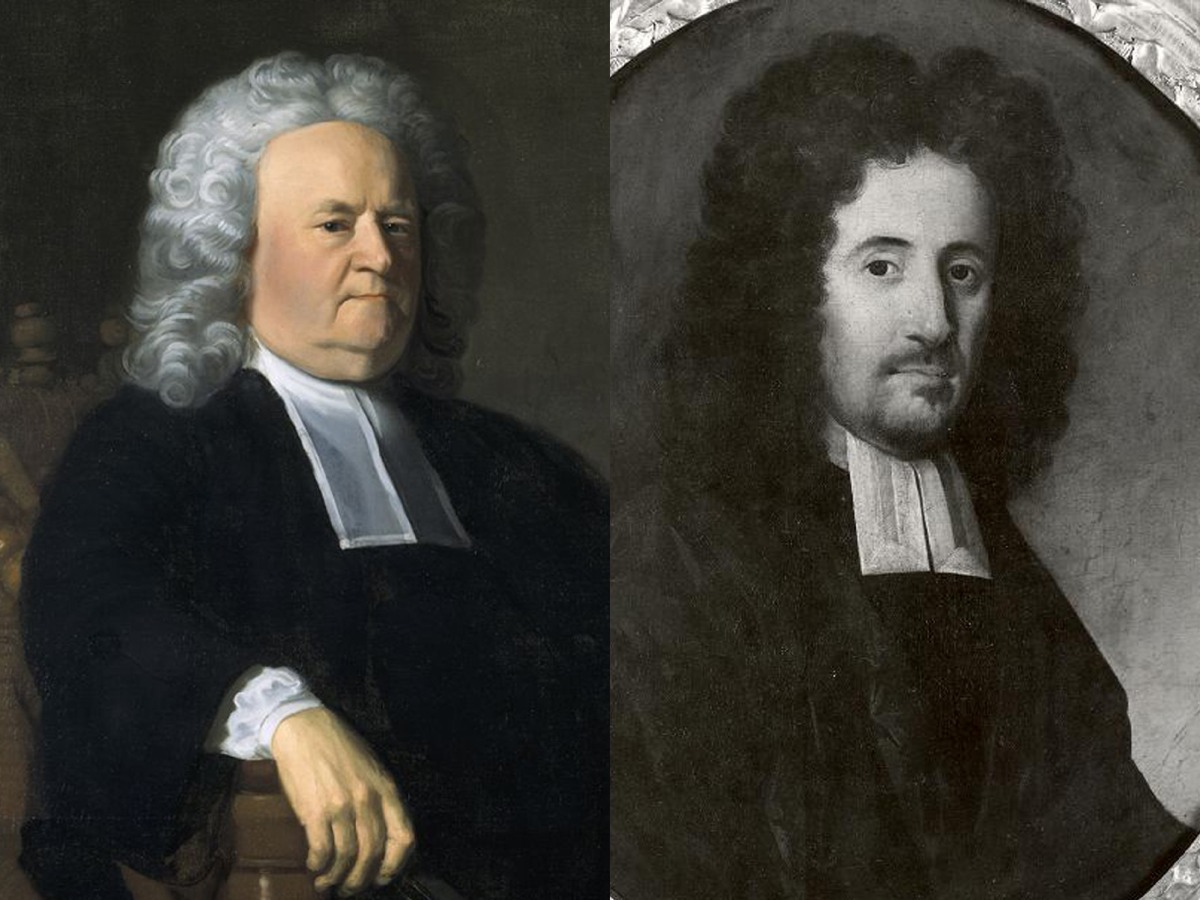
Eighteenth-century Harvard presidents—and slaveowners—Edward Holyoke (left) and Benjamin Wadsworth
Painting of Edward Holyoke by John Singleton Copley/Harvard Art Museums; painting of Benjamin Wadsworth in the public domain
In recent years, Harvard has made efforts to publicly recognize its connections to slavery. A plaque at Wadsworth House dedicated four years ago honors four enslaved people who lived and worked in the homes of former Harvard presidents Benjamin Wadsworth and Edward Holyoke in the eighteenth century. Read more about these efforts, and the larger Harvard and Slavery project, in “Harvard's Slave Connections.”
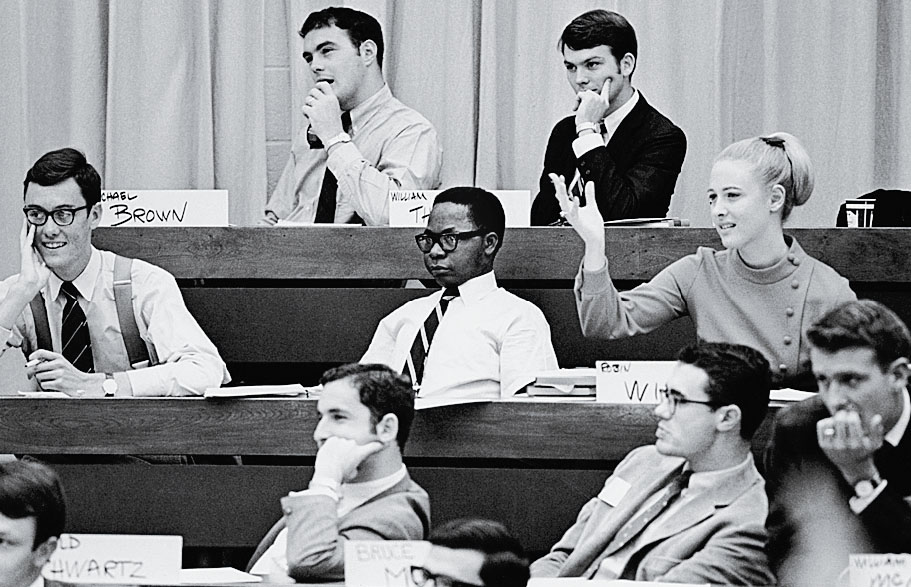
One among many: Harvard Business School pioneer Robin Wigger, suitably attired, in class among fellow M.B.A. students, circa 1970
Photograph courtesy of the Harvard Business School Archives Photograph Collection
“What’s a nice girl like you doing in business school?” That was the question that Robin Wigger, 1970 graduate of Harvard Business School and one of the few women in her class, advised her women peers to be prepared to answer. "The Girls of HBS" is a revealing look at a Harvard that, while just a few decades old, now seems unrecognizable.
~Marina Bolotnikova, Associate Editor
It is a somewhat amusing fact that in the annals of Harvard Commencement speeches, many have been delivered by high-ranking German officials. Before Chancellor Angela Merkel’s speech last year, three previous chancellors had delivered the address: Helmut Kohl (1990), Helmut Schmidt (1979), and Konrad Adenauer (1955). German President Richard von Weizsäcker spoke too, in 1987. Our editor concludes that the surest path to the podium would be to follow their lead—and win a major German election.
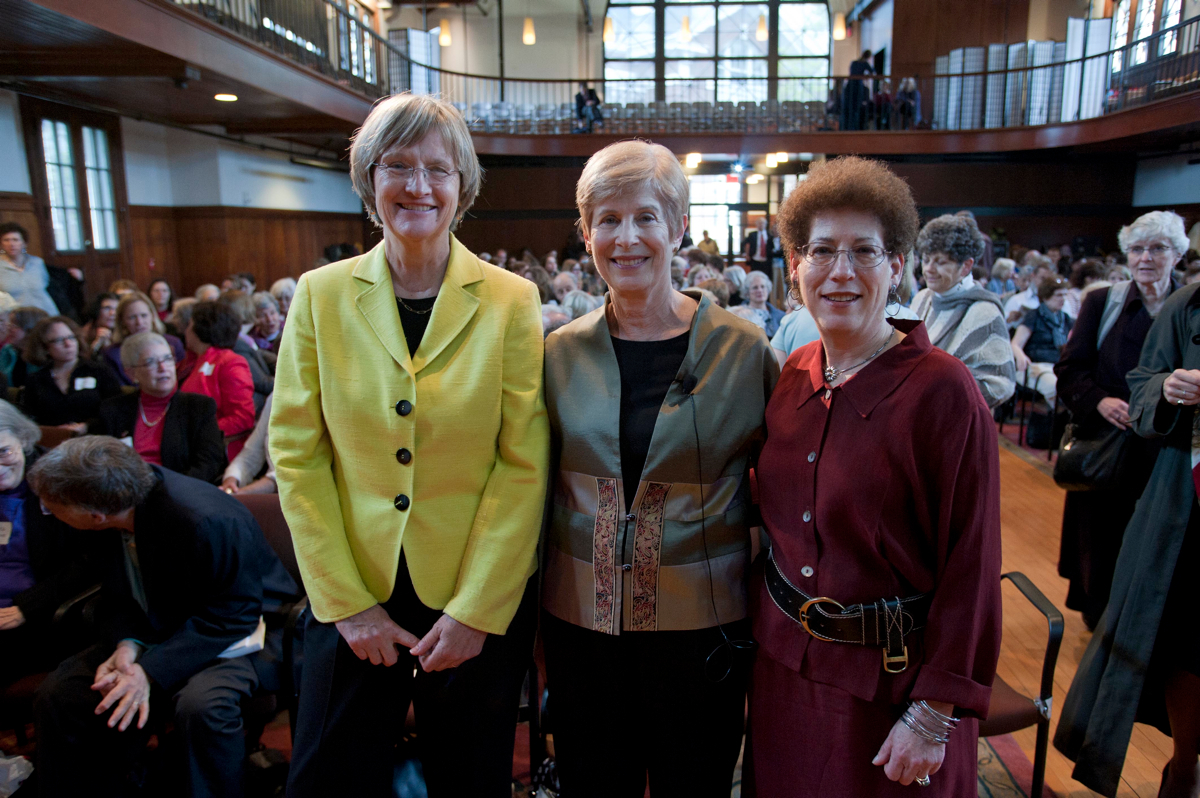
Drew Faust, Helen Horowitz, and Radcliffe Institute Dean Lizabeth Cohen
Photograph by Tony Rinaldo
The first women who were able to access some of Harvard’s resources did so in the face of a begrudging University. Seven years after the institution opened its lectures to the public in 1863, the audience was 70 percent female. But when Harvard opened its all-male graduate department, the lectures were canceled. In 1879 the “Society for the Collegiate Instruction of Women,” which provided lectures by Harvard instructors, opened, but the group lacked a building and had to rent out rooms for each class—and Harvard offered no official recognition. Madeleine Schwartz ’12 gives a fascinating, concise look at the early history of women at Harvard—based on a talk by cultural historian Helen Lefkowitz Horowitz.
~Jacob Sweet, Staff Writer/Editor
More from “At Home with Harvard”
- Spring Blooms: Your guide to accessing the Arnold Arboretum as the seasons turn in Boston
- Harvard in the Movies: Our favorite stories about Harvardians on screen
- The Literary Life: Our best stories about the practice and study of literature
- Night at the Museum: Our coverage of Harvard’s rich museums and collections
- Nature Walks: Walking, running, and biking in Greater Boston’s green spaces, even while social distancing
- Supporting Local Businesses: Our extensive coverage of local restaurants and retailers, and how you can support them during this time of crisis
- Medical Breakthroughs: Our best stories going deep into the ideas and personalities that will shape the medical care of tomorrow
- Rewriting History: From race and colonization to genetics and paleohistory, our favorite stories about the people reshaping the study of history
- The Climate Crisis: Highlights from our wide-ranging coverage of the environment
- Crimson Sports Illustrated: With 2020 winter sports ending early and the spring collegiate season wiped out almost entirely, we look back at Crimson highlights from past years.
- The Real History of Women at Harvard: Stories covering the admission of women, the Harvard-Radcliffe merger, the rise of women in the faculty ranks, Harvard’s first woman president, and more
- The Undergraduate: Our favorite student essays on the undergraduate experience
- The Secret Lives of Animals: From zoology and evolutionary science to animal-rights law to the joys of local wildlife, a selection of our favorite animal stories
- Harvard on the Small Screen: Our coverage of the creators, writers, and actors in your favorite TV shows
- Extraordinary Lives: From our “Vita” section, extraordinary profiles of authors, artists, activists, and more
- Great Legal Minds: Our favorite stories on the minds reshaping American law
